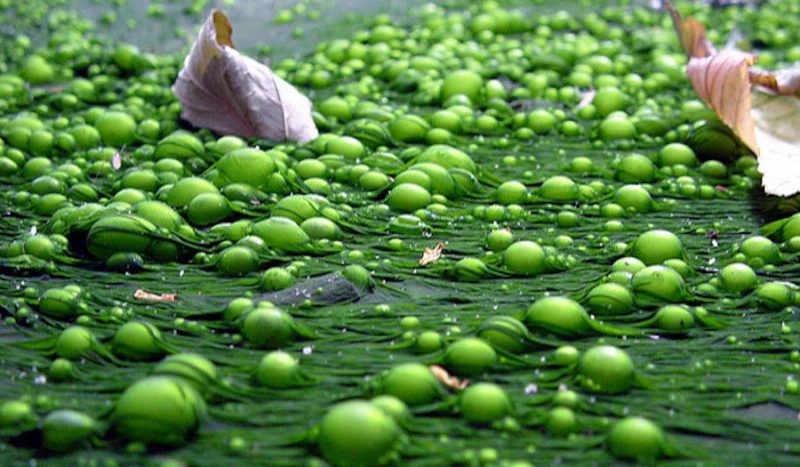What is the difference between oligotrophic and eutrophic lakes?
Water bodies are found all over the world. These bodies tend to differ in terms of nutritional content, geographical location, and pollution rates.
The lentic ecosystem is an aquatic system that is stationary or relatively still waters. The classification of the lake system is based on productivity and trophic states. Examples of lake system types are oligotrophic, eutrophic and mesotrophic lakes.
The core difference between oligotrophic and eutrophic lakes is that oligotrophic lake has clear water for drinking, low productivity, and nutrients while the eutrophic lake has high nutrients, high productivity, and dark water.
What Are Oligotrophic Lakes?
Oligotrophic lakes are those lakes with low levels of nutrients, low productivity rates, and clear water for drinking. The oxygen level in the lake is comparatively high and the temperatures are comparatively low.
The water in the lake is quite cold and common fish type presence in the lake are whitefish and trout. The bottom of the lake is not suitable for the survival of aquatic organisms.

Oligotrophic Lake Characteristics
- The lakes tend to be quite deep in-depth
- Have a low density of vascular aquatic plants, phytoplankton, and algae.
- Tend to be quite clear water body in Northern Minnesota
- Has a low level of biological production
- Quite common in cold regions in the world
- Has low content of phosphates and nitrates
- The ecosystem is dominated by green algae
- Content of chlorophyll is quite low
- Provide clean water for drinking
- Examples of oligotrophic lake species are whitefish and trout
What Are Eutrophic Lakes?
Eutrophic lakes are those with a high level of nutritional content, high biological productivity, and dark water. The kind of lakes is created through eutrophication.
The level of phosphate and nitrates in the lake is quite high. The content of nutrients supports the growth of algae. The penetration of light to the bottom is reduced due to algae cover.

Eutrophic Lakes Characteristics
- Tend to be shallow in depth
- Lakes are formed through eutrophication process
- Have a high density of algae, vascular aquatic plants, and phytoplankton
- Tend to be quite fertile due to the high level of nutrients
- The color of the water is dark due to the blue-green growth of algae
- Have low species diversity but the high population density
- Has high biological productivity
- Chlorophyll content tends to be high
- Dominated by green algae in the ecosystem
- Eutrophic lake species are pinfish, largemouth bass, and perch
Comparison Chart: Oligotrophic Lakes Vs Eutrophic Lakes
| Basic Terms | Oligotrophic Lakes | Eutrophic lakes |
| Definition | These are lakes with fewer nutrients, low productivity, and clear water | These are lakes with high nutrients, high productivity, and dark water |
| Nutrients Content | Less phosphate and nitrates | High level of phosphate and nitrates |
| Biological oxygen demand | Quite low | Comparatively high |
| Sunlight penetration | High | Low |
| Odor | No odor | Presence of odor due to high decomposition rate |
| Pollution indicator | Not for pollution indication | A direct indicator of pollution |
| Algae blooms | Absent | Present |
| Water quality | Cold, colorless, and dissolved oxygen | Muddy, hot and covered with green matter |
| Eutrophication process | Less | High |
| Occurrence region | Cold regions | Warmer regions |
| Species density | Low | High |
| Chlorophyll level | Low | High |
| Algae | Green | Blue-green |
| Examples of species | Whitefish and trout | Largemouth bass, perch, and pinfish |
Core Differences between Eutrophic Lakes and Oligotrophic Lakes
- Eutrophic lakes are shallow in depth while oligotrophic lakes are deep in-depth
- Oligotrophic lakes have low phosphate and nitrates while eutrophic lakes have a high level of phosphate and nitrates making them fertile
- Eutrophic lakes have high primary productivity while oligotrophic have low primary productivity
- The oligotrophic lake is rich in oxygen amount while the eutrophic lake has low oxygen amount
- The oligotrophic lake has high species diversity of green algae while the eutrophic lake has a high diversity of blue-green algae species
- Oligotrophic lake ecosystem is dominated by green algae while eutrophic lake ecosystem is dominated by blue-green algae
- The oligotrophic lake has low trophic index while the eutrophic lake has a high trophic index
- The chlorophyll content in the oligotrophic lake is low while high in a eutrophic lake
- The oligotrophic lake has a low density of species while eutrophic has a high density of species
- The oligotrophic lake has clear water for drinking while the eutrophic lake has dark water
- Algae bloom is rare in the oligotrophic lake while frequent in a eutrophic lake
- Oligotrophic lake occur in colder regions while eutrophic lake in warmer regions
- The oligotrophic lake has a low chance of eutrophication process while the eutrophic lake has a high chance
- The oligotrophic lake is not an indicator of pollution while the eutrophic lake is a direct indicator of pollution
- The oligotrophic lake has low dissolved oxygen while the eutrophic lake has a high level of dissolved oxygen
- Eutrophic lake species examples are largemouth bass, perch, and pinfish while oligotrophic lake species examples are whitefish and trout
Similarities between Oligotrophic and Eutrophic Lakes
- Both are a natural system
- Both are aquatic system
- Both contain biotic and abiotic components
- Both ecosystems contain oxygen
- Both are lentic ecosystem
- Both show thermal stratification
You May Also Like:
- Difference between Habitat and Niche
- Difference between Ecosystem and Community
- Difference between Food Chain and Food Web
- Difference between Abiotic and Biotic Factors
Comparison Video
Summary
The nutritional composition of lakes helps to define their trophic level. The common trophic level of lakes is oligotrophic, mesotrophic and eutrophic. The nutrients and biological productivity help to define the differences between these lentic systems.